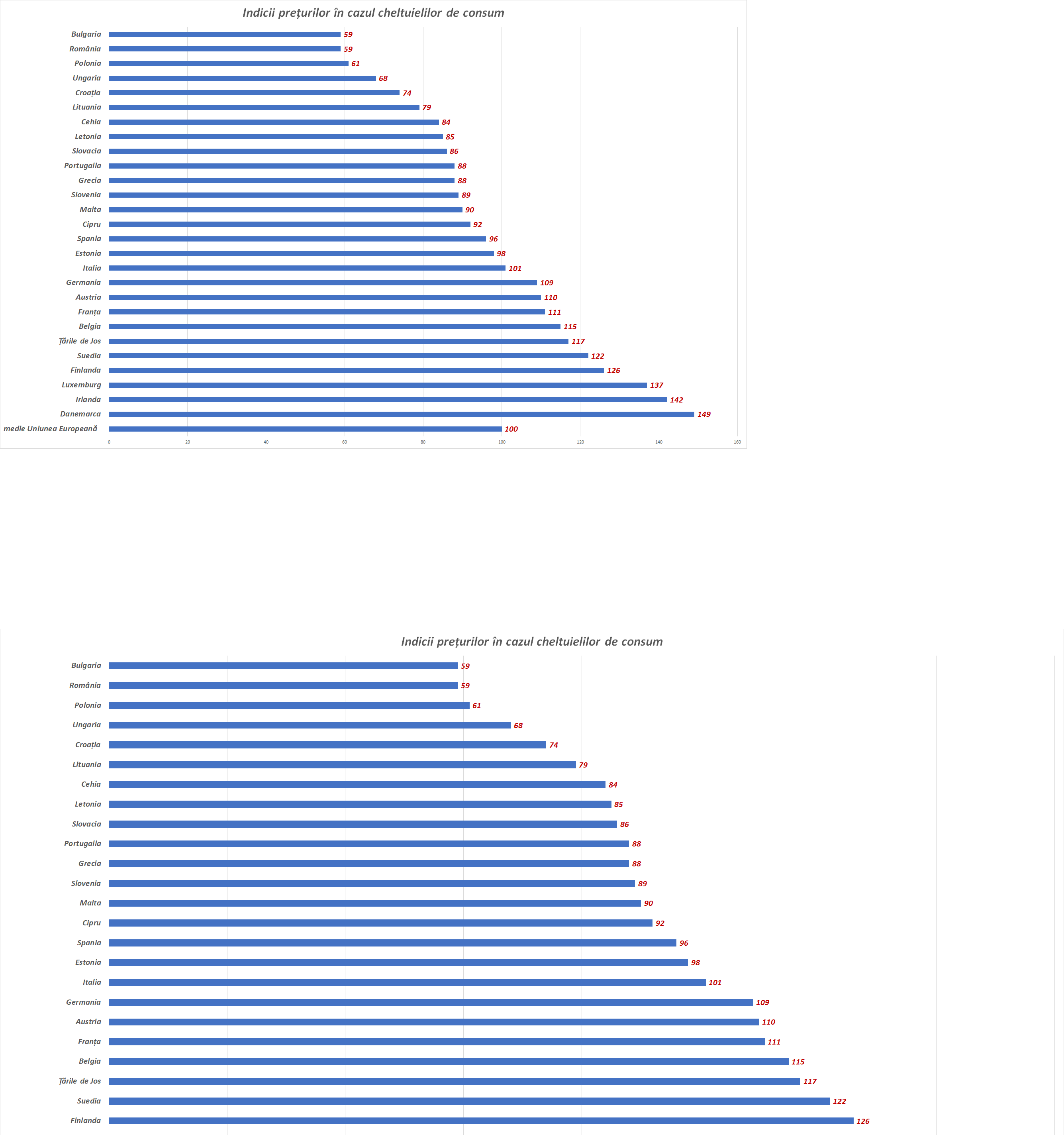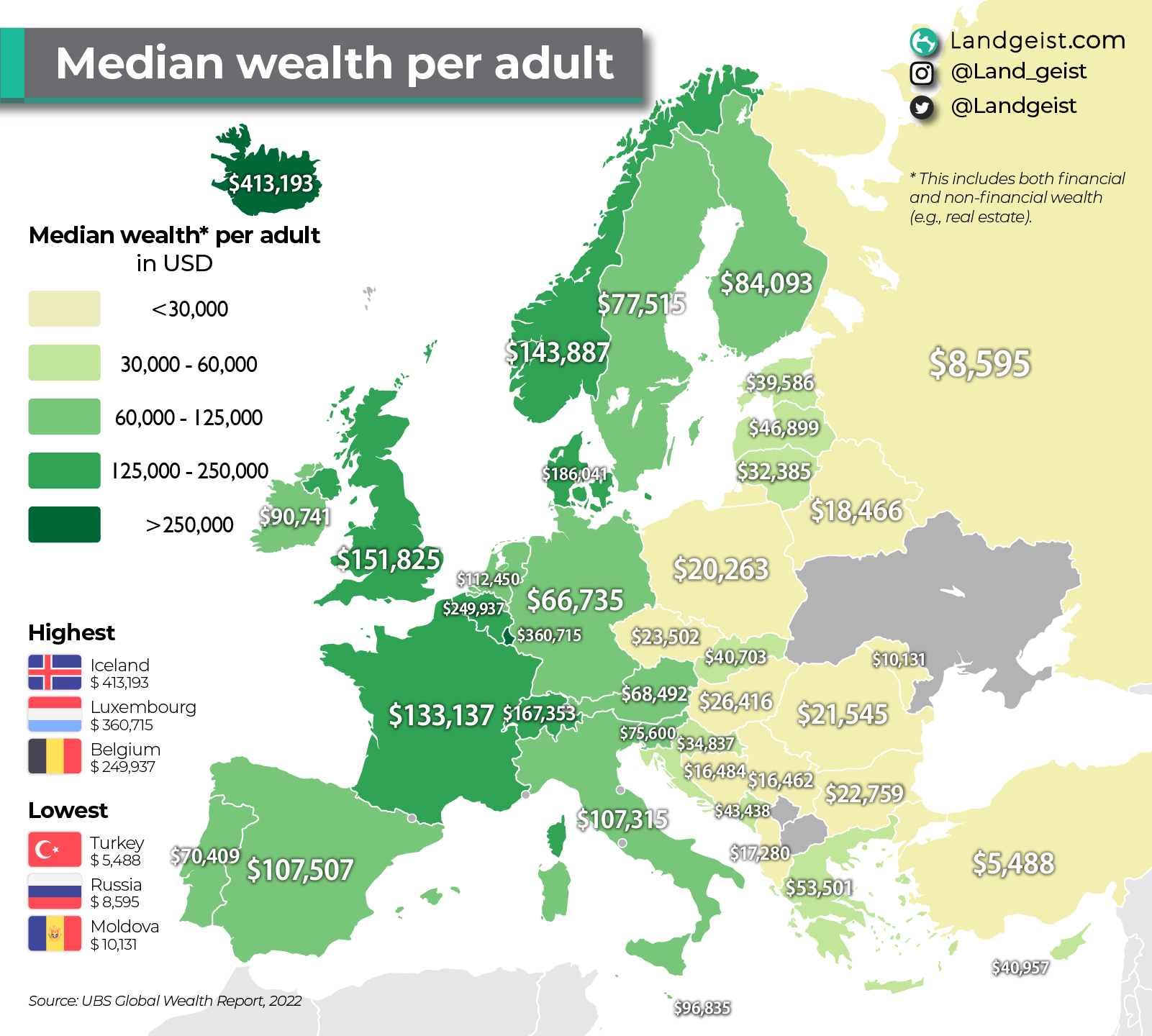
Bulgaria and Romania have the lowest prices in the EU for furniture and household appliances, according to statistics that analyzed Romania’s purchasing power compared to EU member states. The cheapest drinks and tobacco are in Bulgaria, and in general the lowest prices for consumer goods are in Bulgaria and Romania.
The data were calculated by Eurostat in December 2023 based on consumer prices collected by participating countries for a common nomenclature of comparable goods and services selected as representative consumption patterns in 36 European countries.
Indices of consumer price levels compared to the European Union average
Price level indices express how many units of the same currency are needed to buy the same amount of goods and services in different countries for each group of goods and services. For consumer goods and services as part of final consumption at the level of the European Union, EUR 100 is paid, and at the two extreme levels – EUR 149 in Denmark and EUR 59 in Romania and Bulgaria, respectively.

- The lowest level of prices for consumer goods and services from final household consumption in the Member States was recorded in Bulgaria and Romania, 41% lower than the EU average, followed by Poland (39% below the EU average).
- Among the member states of the European Union, the highest level of household final consumption prices was recorded in Denmark (49% higher than the EU average), followed by Ireland (42% higher than the EU average), Luxembourg (37% higher). the EU average) and Finland (26% higher than the EU average).
Indices of the price level for the main groups of goods and services
- According to Eurostat, Romania is the cheapest member country for the group “Food and non-alcoholic beverages” (72%), followed by Poland (73%), and at the opposite pole Denmark and Luxembourg with the highest level of prices for this group of goods (121 %).
- Bulgaria has the lowest price level in the groups “Alcoholic beverages and tobacco” (66%), “Clothing and footwear” (80%) and “Household maintenance, water, electricity, gas and other fuels” (38%), followed by Poland by the groups “Alcoholic beverages and tobacco” (73%) and “Home maintenance, water, electricity, gas and other types of fuel” (39%).
- Denmark has the highest price level for clothing and footwear (133%), while Ireland is the most expensive country in the EU for alcohol and tobacco (216%) and maintenance. housing, water, electricity, gas and other types of fuel” (195%).
- Bulgaria and Romania have the lowest price level among the EU countries for the group “Items of furniture, household appliances and current home maintenance” (71%).
- Hungary remains the cheapest member country for the Transport group (70%), followed by Poland for the Leisure and Culture group (62%), and Bulgaria records the lowest price level for the accommodation and restaurant services group (50%). ).
- Luxembourg has the highest level of prices for “Furniture, household appliances and household services” (128%) among member countries, while Denmark is the most expensive EU country for the groups “Transport” (129%), “Recreation and culture” (143%), and accommodation and restaurant services (154%).
Indices of the volume of gross domestic product per inhabitant, calculated on the basis of purchasing power parity
- Romania, together with Hungary, registers the same value of the GDP volume index per inhabitant, calculated on the basis of PPC, and is at the level of 76% compared to the average indicator of the European Union.
- The lowest value of gross domestic product per inhabitant in 2022 was recorded by Bulgaria, 38% below the EU average.
- The highest level of GDP per capita in the European Union was recorded by Luxembourg, which exceeded the EU average by 156%. This is partly due to the fact that a large number of foreign nationals have an increased share of the country’s total labor force and contribute to the realization of GDP, but are not part of the permanent population.
Average wealth of Romanians compared to other European countries
On the map below, we can see how much personal wealth the average European adult has. Wealth is expressed in US dollars and includes both financial and non-financial wealth. Non-financial wealth consists mostly of land and real estate.
This map shows the median, not the mean, because the mean is usually skewed by the extremely wealthy, resulting in a total that far exceeds the wealth of most adults. For the median, half the population has more wealth than shown, and half has less wealth.
Residents of Luxembourg ($360,715) and Iceland ($413,193) currently have the most wealth in Europe. As we can see on the map, the western half of Europe clearly has a higher average well-being than the eastern half of Europe.
Of course, this can be partially explained by the high level of average wages and cost of living in these countries. However, there are still some significant differences between countries with the same cost of living and GDP per capita.
The lowest average wealth is in Turkey ($5,488) and Russia ($8,595). These are the only countries in Europe where the average wealth is below $10,000.
According to pe.cifre, which links to Landgeist.com, the average value of wealth in Romania is $21,545 per adult.

Source: Hot News
Lori Barajas is an accomplished journalist, known for her insightful and thought-provoking writing on economy. She currently works as a writer at 247 news reel. With a passion for understanding the economy, Lori’s writing delves deep into the financial issues that matter most, providing readers with a unique perspective on current events.